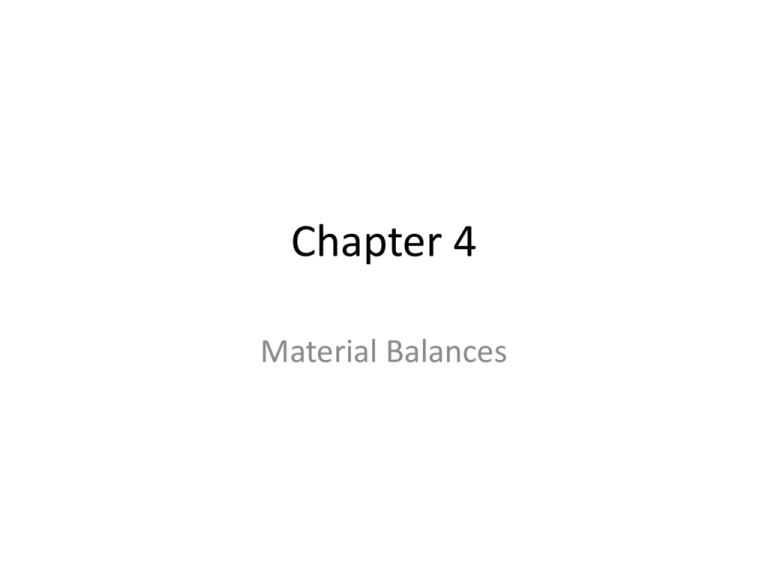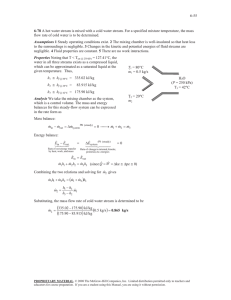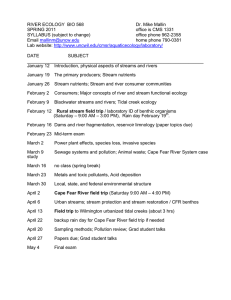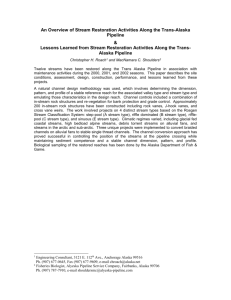Chapter 4_Material Balances - all things chemistry with dr. cody
advertisement

Chapter 4 Material Balances Section 4.1—Process Classification • Three different types of processes: – Batch • Material is fed in, process occurs, material is removed – Continuous • Constant flow of material (most common) – Semibatch • Just doesn’t fit in • Processes can also be run assuming steady state or transient conditions – Steady state has no change in any operation parameter Section 4.2—Balances • For all non-nuclear processes, the statement of conservation of matter (total mass) will hold and is expressed in words as follows: • General Mass Balance – Input + Generation - Output - Consumption = Accumulation • For all nonreactive processes (no chemical reaction): – Accumulation = Input – Output • For all nonreactive processes at steady state: – Accumulation = 0 – Input = Output Example • A pipe containing a hot sodium chloride solution (25% by mass) passes through a heat exchanger with a flow rate of 90 kg/min. There are two output streams one of which has a flow rate of 35 kg/min. Example #2 • One thousand kilograms/hr of a 50%/50% mixture of benzene and toluene are fed into a distillation column which separates it into two fractions. The mass flow rate of benzene in the top stream is 450 kg/hr and that of toluene in the bottom stream is 475 kg/hr. Determine the unknown flow rates assuming steady state. Species Mass Balance (SMB) • A species mass balance is basically the application of the law of conservation of mass with respect to a single component in an input or output stream – Input = Output; as applied to a single component (species) Formulation of the Problem 1. Draw a picture of the system. Show all streams entering and leaving the system. Label all streams with symbols. Where possible, put given values on the appropriate variable. *Define the particular system you are going to evaluate. May have to repeat this step multiple times to finish entire problem. 2. To perform the material balance calculations, the following info is necessary: a) b) c) Mass of all stream entering and leaving system Composition of all streams Chemical reactions involved Formulation of the Problem 3. Determine the number of knowns and unknowns. Generate a set of linearly independent algebraic equations equal in number to the number of unknowns. 4. Set of algebraic equations is generated by applying statement of conservation of mass to the problem. 5. Use algebra to get answer Example • A distillation column for the separation of a mixture of methane, ethane, and propane is constructed to handle a feed stream of 100 kg/h of composition 80 weight % CH4, 15 weight % C2H6, and the balance propane. Find the flow rate and composition for each stream.











